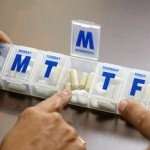
Better management and competition may have led to lower overall costs for the Part D prescription drug program.
A paper commissioned by the Kaiser Family Foundation found that both the Congressional Budget Office and President Bush over estimated the cost of funding the Prescription Drug Plan, Part D, of Medicare. Medicare Part D Spending Trends: Understanding Key Drivers and the Role of Competition [Download report ->[download id=”24″]] reported that the CBO estimated in 2003 that the Part D program would cost $407 billion for fiscal years 2004 to 2013. The Bush Administration estimated a $510.7 billion cost to implement the new program: Medicare Prescription Drug Improvement and Modernization Act of 2003 (MMA). The 2012 Medicare Trustees Report shows that the Part D Plan cost has been running 26% to 42% below the CBO estimate for years 2006 through 2011.
Factors influencing lower cost numbers
The paper offers explanations as to why the Part D program has cost less than expected.
1. Enrollment in the Part D plans has been 14% below estimates.
2. The growth of prescription drug spending has slowed below projections in 2003.
3. The price of retail drugs has not risen as fast as expected.
4. Larger manufacturer rebates and discounts have been higher than initially thought.
5. Fewer new and expensive drugs have come onto the market.
6. Beneficiaries did not significantly increase their use of prescription medications.
7. The expiration of many drug patents and increase use of generics has lowered costs.
The influence of competition versus consumer trends
One of the underlying questions was, “What is driving the lower costs to the Part D program?” A competitive market place has seen multiple companies offering the Part D plans across the nation. In the greater Sacramento region alone there are five well known insurance carriers offering plans. The plans are also constantly looking to improve their plans or position to attract new enrollment. Case in point is Humana partnering with Walmart to offer a very competitive plan and monthly premiums.
The paper also notes that consumers are using more generics and perhaps managing their medication better. Both of these feed into lower overall projected program costs. There has also been speculation that the Part D program has allow Medicare beneficiaries to afford all their prescriptions and helping them avoid a worsening of their conditions which would need stronger medicines.
Similarities to the Affordable Care Act
Similar to the MMA, the ACA, healthcare reform, uses a variety of varibles upon which to estimate the total costs. Even with the best models and historical data it is hard to predict with precision consumer behavior when choosing how they will participate in the market.
The paper noted that there was significant opposition to any cost for the Part D program exceeding $400 billion over a 10 year period. We shouldn’t forget that aside from manufacturer rebates and small reimbursements from the states, the Part D program has no financing mechanism; no new taxes or increase of existing taxes. The funds come directly out of the general fund. Fast forward 9 years and there is even more heated debated over how to pay for the $6 billion price tag to avoid raising student loan interest rates. Certainly, the MMA never would have been passed in today’s political climate.
The experience with the actual versus estimated costs of the Part D program adds a healthy dose of skepticism when it comes to the costs estimates of the ACA under the CBO or the Obama Administration. Each variable in the cost formula compounds the uncertainty of the final number. We have already seen enrollment in the PCIP at 15% of projection and an operating cost of 2.5 times the estimate.
This is not an argument against healthcare reform. Rather, this paper shows the folly of constructing any argument solely around cost projections.

